Admiral Zheng
description: Ming Dynasty admiral, explored and influenced Indian Ocean
47 results
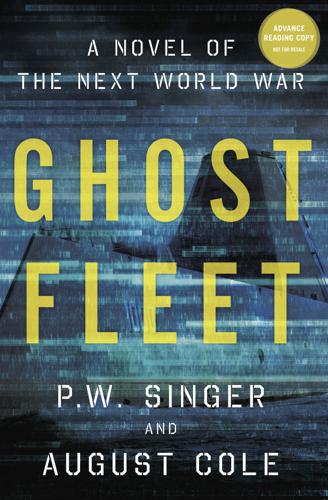
Ghost Fleet: A Novel of the Next World War
by
P. W. Singer
and
August Cole
Published 28 Jun 2015
As she closed in, the ball of blue began to separate, becoming a dozen small triangular blue icons dancing along the horizon. Friendly forces. A lot of them. The tab associated with the cluster winked at her: TF Longboard. As she zoomed out from the cluster of blue, she noticed that a single blue dot was a few hundred miles ahead of it; it had a Z for an icon. Admiral Zheng He, Four Hundred and Fifty Miles Southeast of Kamchatka Peninsula The Admiral Zheng He pushed through the Pacific swell, each wave slapping the flagship of the joint Directorate-Russian task force, almost like slow applause. The ship’s namesake was the second son of a lowly rebel captured by Ming Dynasty forces and castrated at the age of eleven.
…
As it traveled from Asia to Arabia and Africa, the massive fleet cowed some kingdoms into submission and defeated the few that chose to fight. By the end of the voyages, Admiral Zheng He had created the first transoceanic empire, a ring of some thirty vassal states with China at the center. Subsequent emperors would turn away from the sea, preventing future voyages. Imperial China grew progressively weaker and eventually suffered the indignity of becoming a vassal to others. The greatness of the age became an embarrassment, as did the memory of Admiral Zheng. Not anymore. At 603 feet, almost as long as the Zumwalt, the ship was officially classified as a cruiser, but it was a battleship by any of the old measures.
…
“No, taking out the enemy’s remaining carriers is more important than even us,” said Simmons. “Proceed as planned.” The drones flew onward past the surface ships, indifferent to both the tension that this bypass caused the American fleet and the relief it gave to the surface ships below. Admiral Zheng He Bridge The shouting on the bridge of the Admiral Zheng He subsided as the aircraft flew on. It had not been visible, but radar had initially picked it up at over thirteen miles overhead. They tried to shoot it out of the sky but it was impossible to get a radar lock. That it had not come in low pointed to its being one of the Americans’ surveillance aircraft, perhaps one of their rumored high-altitude drones.
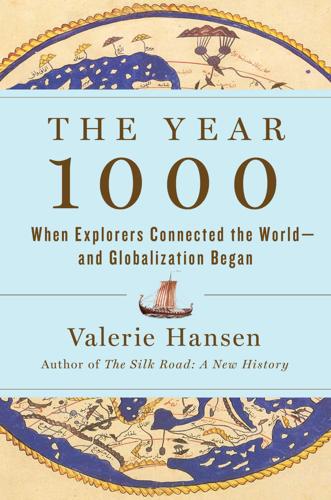
The Year 1000: When Explorers Connected the World―and Globalization Began
by
Valerie Hansen
Published 13 Apr 2020
While, for example, the evidence for the Viking voyages to Newfoundland is ironclad, the case for the Chinese beating Columbus to the Americas is speculative. The idea that the Chinese arrived first is, to some, both appealing and intriguing: what if they had? It’s certain that the Chinese navy led by Admiral Zheng He voyaged to Southeast Asia, India, the Arabian Peninsula, and the East African coast in the 1400s. Yet there is no credible evidence to indicate that Admiral Zheng He’s fleets sailed beyond the Cape of Good Hope to the Americas, Australia, or to the North and South Poles—all claims put forward by Gavin Menzies’s book 1421. The book enjoyed enormous success—it has outsold every other book on Chinese history—yet it seems no serious scholar of Chinese history accepts its findings.
…
China’s most extensive ocean voyages occurred between 1405 and 1433 when the Ming dynasty sponsored seven voyages led by Admiral Zheng He. An imperial fleet of 317 ships carrying 28,000 men went from China to Southeast Asia, then India, and on to Iraq. Some of the ships broke away from the main fleet and went as far as Mombasa on the east coast of Africa. We know this because both written and archeological evidence of these voyages survives in the form of Chinese coins found overseas, Chinese historical records, and—most convincing of all—Chinese-language inscriptions carved onto stone tablets in Sri Lanka and Calicut, India. Admiral Zheng’s largest ships were 200 feet (61 m) long, dwarfing Christopher Columbus’s ships, probably a mere 100 feet (30 m) long (surprisingly, we don’t know the precise dimensions of Columbus’s ships).
…
Admiral Zheng’s largest ships were 200 feet (61 m) long, dwarfing Christopher Columbus’s ships, probably a mere 100 feet (30 m) long (surprisingly, we don’t know the precise dimensions of Columbus’s ships). While Admiral Zheng’s full fleet had 317 ships, Columbus traveled with only 3. Admiral Zheng’s ships went through the Malacca Strait along the coast of the Arabian Peninsula and India, covering 8,000 miles (13,000 km). If they crossed the Indian Ocean directly, the route was only 6,500 miles (10,500 km). If you add the 4,700-mile (6,500 km) leg from Basra, in Iraq, to Sofala, Mozambique, on the east coast of Africa, the length of the trip is even more noteworthy, especially given that Columbus traveled only some 4,400 miles (7,000 km) on his first voyage.
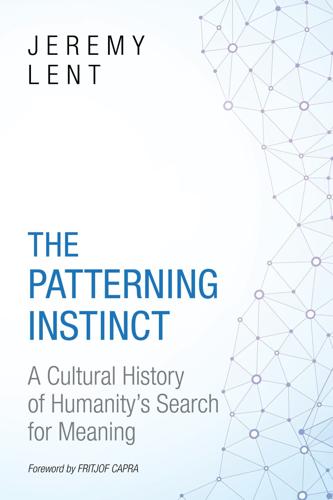
The Patterning Instinct: A Cultural History of Humanity's Search for Meaning
by
Jeremy Lent
Published 22 May 2017
There seems little doubt that we are currently in the midst of one of the great critical transitions of the human journey, and yet it is not at all clear where we will end up once our current system resolves into a newly stable state. The final chapter uses this systems framework to explore some of the possibilities we face. My hope in writing this book is that it can offer a valuable framework for readers to come to their own assessment of humanity's future path—and their own potential role in shaping it. In 1405, Admiral Zheng set off from China with a glorious armada, leading three hundred magnificent ships on a thirty-year odyssey to distant lands as far afield as Africa. Everywhere he went, Zheng—a Muslim by birth whose father had completed a pilgrimage to Mecca—heightened the prestige of the empire. He left such a fine impression that, in some parts of Southeast Asia, he was even deified, with temples still venerating him to this day.
…
All human societies have used their conceptualizing abilities to exploit the natural world—and other humans—to a greater or lesser degree. But, in Western Europe, this feedback cycle generated a new conception of power and made exploitation possible on a scale previously inconceivable. The story of this dramatic transformation in power and exploitation is the subject of the next chapter. What was in Admiral Zheng's mind when he set off from China in 1405 with his massive armada? What was his ambition—for himself and the Chinese emperor? Over the course of the next three decades and seven long voyages, Zheng and his expeditionary force would visit a spectacular array of places ranging from East Africa to Arabia and Sri Lanka to Sumatra.
…
It was through the deadly and fortuitous combination of the guns, germs, and steel of the book's title, Diamond explains, that Europeans were able to conquer the rest of the world.21 Diamond's book offers a profound and satisfying explanation for the different rates of development between Eurasia and the rest of the world. However, it doesn't give as satisfactory an answer to the question posed at the beginning of this chapter: why did the massive armada of Admiral Zheng leave such a limited impression on history, while the three flimsy boats of Christopher Columbus transformed the world beyond recognition? After all, the Chinese had gunpowder and steel in far greater quantities than the Europeans, and they were equally resistant to the germs of Eurasia.22* One answer is that the Europeans approached the world with fundamentally different values than the Chinese, one of which was their approach to power.
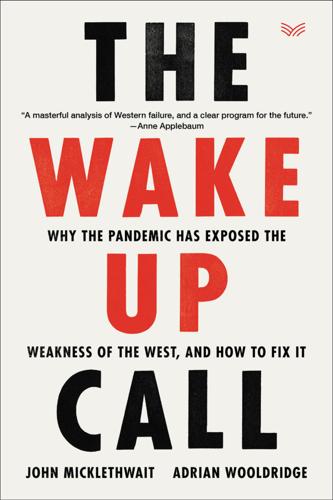
The Wake-Up Call: Why the Pandemic Has Exposed the Weakness of the West, and How to Fix It
by
John Micklethwait
and
Adrian Wooldridge
Published 1 Sep 2020
When Vasco da Gama boldly rounded the Cape of Good Hope in 1497, “opening up” a route to India, the Muslim rulers he met in East Africa scorned his paltry gifts but generously—or condescendingly—lent him navigators who had been plying the route to India for years. Da Gama’s entire fleet of four tiny ships could just about have been squeezed into one of China’s vast treasure ships that the Chinese admiral Zheng He had brought to East Africa earlier that century.3 Yet history was turning. The Ottomans were held at Vienna in 1529—and never got any further west. While da Gama was one of the first of a flotilla of European explorers, Zheng He was the last of his breed. In 1433 the emperor banned all further voyages overseas and ordered the destruction of all oceangoing ships.
…
Its decline did not really become obvious until a century later and the fall did not begin till 376, when the empire’s borders collapsed. And throughout Gibbon’s story there were moments when Rome seemed capable of rescuing itself under good emperors such as Diocletian (who ruled from 284–305). The same applies to the story we have already told about China: the Middle Kingdom possibly reached its peak with Admiral Zheng He’s last voyage in 1433, but it had plenty of chances to reverse its decline after that. So when we date the decline of the Western state to the 1960s, this comes with the fervent hope that it can still rebound. We have the technology, the power, and the competitive threat to prompt a new beginning.
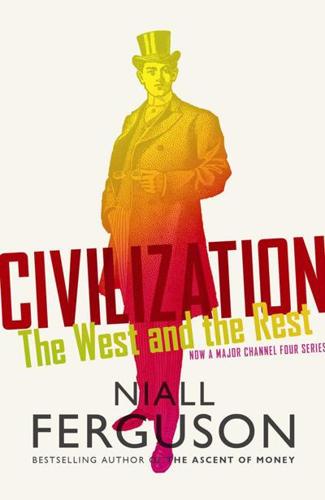
Civilization: The West and the Rest
by
Niall Ferguson
Published 28 Feb 2011
As a new century dawned in 1400, China was poised to achieve another technological breakthrough, one that had the potential to make the Yongle Emperor the master not just of the Middle Kingdom, but of the world itself – literally ‘All under heaven’. In Nanjing today you can see a full-size replica of the treasure ship of Admiral Zheng He, the most famous sailor in Chinese history. It is 400 feet long – nearly five times the size of the Santa María, in which Christopher Columbus crossed the Atlantic in 1492. And this was only part of a fleet of more than 300 huge ocean-going junks. With multiple masts and separate buoyancy chambers to prevent them from sinking in the event of a hole below the waterline, these ships were far larger than anything being built in fifteenth-century Europe.
…
The West’s ascendancy was confirmed in June 1842, when Royal Naval gunboats sailed up the Yangzi to the Grand Canal in retaliation for the destruction of opium stocks by a zealous Chinese official. China had to pay an indemnity of 21 million silver dollars, open five ports to British trade and cede the island of Hong Kong. It was ironic but appropriate that this first of the so-called ‘Unequal Treaties’ was signed in Nanjing, at the Jinghai Temple – originally built in honour of Admiral Zheng He and Tianfei, the Goddess of the Sea, who had watched over him and his fleet more than four centuries before. They are building ships again in China – vast ships capable of circumnavigating the globe, leaving with containers full of Chinese manufactures and bringing back the raw materials necessary to feed the country’s insatiably growing industrial economy.
…
In the factories of Wenzhou, workers churn out suits by the hundred thousand and plastic pens by the million. And the waters of the Yangzi are constantly churned by countless barges piled high with coal, cement and ore. Competition, companies, markets, trade – these are things that China once turned its back on. Not any more. Today, Admiral Zheng He, the personification of Chinese expansionism and for so long forgotten, is a hero in China. In the words of the greatest economic reformer of the post-Mao era, Deng Xiaoping: No country that wishes to become developed today can pursue closed-door policies. We have tasted this bitter experience and our ancestors have tasted it.
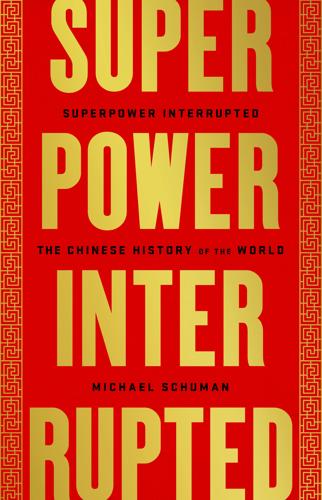
Superpower Interrupted: The Chinese History of the World
by
Michael Schuman
Published 8 Jun 2020
Looked upon by Chinese as a period of foreign domination and discrimination, it was also the first time China became integrated into a larger political entity—the pan-Asian Mongol Empire—leading to important cross-cultural exchanges and vibrant trade. Ming 1368–1644 The Ming reconquered China from the Mongols and claimed to reestablish authentic Chinese rule in China. The two most famous achievements of the Ming were the building of the Great Wall of China as we know it today, and the dispatch of “treasure fleets” led by Admiral Zheng He, one of the most adventurous escapades to promote Chinese global influence in all of China’s history. Qing 1644–1912 China’s final imperial dynasty, the Qing was formed by another group of invaders from the north, the Manchus. Voracious conquerors, the Qing expanded the Chinese empire to its greatest geographic extent.
…
He was instrumental in creating the imperial system and, through his foreign adventures, connecting China to the world. Xi Jinping, Politician. He became general secretary of the Chinese Communist Party in 2012 and president of China in 2013. Yongle, Emperor of the Ming Dynasty. Ruling from 1402 to 1424 AD, the third emperor of the Ming is most famous for dispatching the great “treasure fleets” of Admiral Zheng He. Yuan Shikai, Statesman. A senior official and military leader during the late Qing Dynasty, he tried and failed to reestablish the imperial system after its fall in the early twentieth century. Yue Fei, General. His feisty defiance against the invading Jurchens in the mid-twelfth century AD made him a much-beloved nationalist hero in China.
…
Yes, the world was humbled before the greatness of China. “The barbarians from beyond the seas, even those who are truly distant,… all have come to court bearing precious objects and presents,” Zheng He told us in a 1431 inscription. “The Emperor has delighted in their loyalty and sincerity.”2 Admiral Zheng He led the expeditions of massive “treasure fleets” to Southeast Asia, India, the Middle East, and Africa in the early fifteenth century to expand Chinese influence across Asia and the Indian Ocean. He is pictured here in an illustration from a Chinese book published around 1600. British Library, London, UK / © British Library Board.
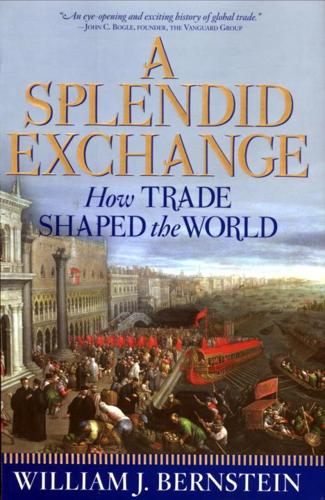
A Splendid Exchange: How Trade Shaped the World
by
William J. Bernstein
Published 5 May 2009
Astoundingly, by the mid-eighth century, barely a hundred years after the death of the Prophet, thousands of Muslim (likely Persian) traders had arrived not only in Chinese coastal ports, but in Chinese inland cities as well.38 By contrast, the first large Chinese oceangoing junks did not venture into the Indian Ocean until about AD 1000, and the legendary eunuch admiral Zheng He would not sail his massive fleet to Sri Lanka and Zanzibar for another four hundred years after that. Arabic was the lingua franca of the new empire, and Muslim navies patrolled ports and sea-lanes from Gibraltar to Sri Lanka. By the ninth century, Islamic rulers in central Asia had established contact with Volga Khazars, and through them, the Scandinavians; in the East, Muslim contact with China grew brisk via both the Silk Road and maritime routes, and North African traders sent caravans south across the Sahara.
…
Until the modern era, even in time of war, the microbe has usually proved a deadlier weapon than the sword against both soldier and civilian, and it seems most reasonable to blame the plague for the decline in population in China between these two dates. The decreased tax revenues from the shrunken Chinese population contributed in no small part to the withdrawal of the Middle Kingdom's navy from the Indian Ocean after the eunuch admiral Zheng He's last voyage in 1433. The nearly total destruction of Egypt's trading and industrial structure, the disappearance of the Mongols from the world stage, and the withdrawal of China from the Indian Ocean created a vacuum that Europe-the last man standing, if just barely-filled only too happily.
…
Marco Polo's fantastical but true tales of places where widows threw themselves on their husbands' funeral pyres. where hashish-addled assassins thought themselves in heaven. and where the sun never set in summer nor rose in winter evoked widespread ridicule in Europe. The modern government of China has revived the story of eunuch admiral Zheng He's seven massive expeditions into the Indian Ocean in the fifteenth century in order to demonstrate its peaceful intentions in the twenty-first century. Be courtesy of David Kootnikof f, Doge Enrico Dandolo saw the Fourth Crusade as a threat to Venice's spice trade with Egypt. He sabotaged the expedition and at age ninety led its remaining forces in the sacking of Constantinople.
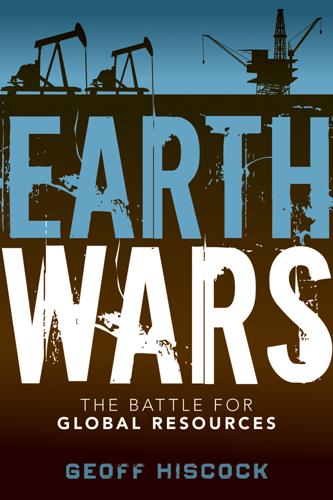
Earth Wars: The Battle for Global Resources
by
Geoff Hiscock
Published 23 Apr 2012
From Europe, the intrepid Franciscan monk Giovanni da Pian del Carpine had travelled overland to the Mongol court in 1246, and Marco Polo, his father, and uncle (probably) had been as far as the Chinese imperial capital of Beijing by the late thirteenth century. In the other direction, the Ming dynasty emperor Yongle had sent massive fleets from China west to India and beyond, beginning in 1405 with a 62-ship convoy that reached Calicut on the southwest coast of India. At least seven fleets under the overall command of Admiral Zheng He sailed out from the China coast in search of treasure, tribute, and geographic knowledge, reaching as far west as the coast of Africa, into the Red Sea, the Arabian Peninsula, and the Persian Gulf. The last voyage set out in 1432 and returned to Nanjing in 1434 after reaching Hormuz at the entrance to the Persian Gulf.
…
Guangzhou, the biggest port of them all, lies at the head of the Pearl River Delta and has a history dating back 3,000 years. As early as the Tang dynasty (618–907 ce) it was home to thriving communities of Indian and Arab traders. Long before the great fifteenth century, Chinese armadas sailed out from Taicang (a port area near Shanghai) under the command of Admiral Zheng He to explore the “western oceans” and trade with Southeast Asia, India, Africa, the Middle East, and (possibly) the Mediterranean states. Guangzhou was the busiest entrepôt on the Chinese coast. It gained further prominence from the sixteenth century onwards as first the Portuguese and then a succession of other European seafarers came calling, looking for exotic goods to take back to their bases in India.
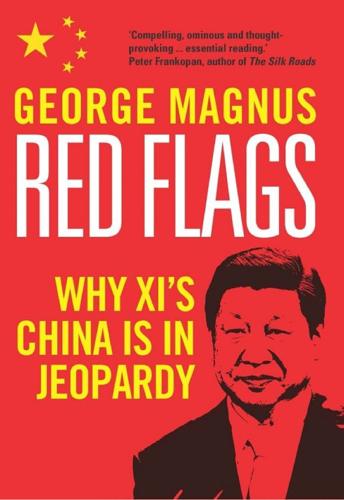
Red Flags: Why Xi's China Is in Jeopardy
by
George Magnus
Published 10 Sep 2018
Apart from major trading networks, old China boasted huge libraries, flourishing iron, metallurgical and transportation industries, a prowess in mathematics, engineering and civil administration, and a legendary capacity for maritime and navigational achievements and the construction of short- and long-range vessels. Indeed, in the early 1270s, when Marco Polo is thought to have arrived in China, he would have been impressed by the wealth of its palaces, the ubiquitous water transportation systems for bringing food into cities, and the subtlety and diversity of its food.5 Admiral Zheng He is revered today for his maritime exploits in the early fifteenth century, in which ships under his command sailed the Indian and Pacific Oceans many decades before the adventures and discoveries of more celebrated European explorers such as Christopher Columbus and Vasco da Gama. Starting in 1405, Zheng made seven journeys, taking in Southeast Asia, India, the Middle East and Africa, in fleets of up to 300 huge ships with nearly 30,000 sailors in total.
…
Xu Huang and Michael Harris Bond, Edward Elgar Publishing, 2012 Yasheng Huang, Capitalism with Chinese Characteristics: Entrepreneurship and the State, MIT Press, 2008 INDEX Unattributed entries, for example geography, refer to the book’s metatopic, China. 1st Five-Year Plan (i) 1st Party Congress (Chinese Communist Party) (i) 5G networks (i) 9/11 (i) 11th Central Committee, third plenum (i) 11th Party Congress (i) 13th Five-Year Plan advanced information and digital systems (i) aims of (i) BRI incorporated into (i) manufacturing and technology (i) pension schemes (i) transport (i) 14th Party Congress (i) 15th Party Congress (i) 18th Party Congress (i), (ii) third plenum (i), (ii), (iii), (iv) 19th Party Congress ‘central contradiction’ restated (i) supply-side reforms (i) Xi addresses (i), (ii), (iii) 21st-Century Maritime Silk Road see Belt and Road Initiative 2000 Olympic Games (i) 2008 Olympic Games (i), (ii) Abe, Shinzō (i) Acemoglu, Daron (i) Action Plan (AI) (i) Addis Ababa (i), (ii) Africa Admiral Zheng (i) BRI concept and (i) Chinese interest in (i) colonialist criticism (i) Japan and (i) loans to (i) metal ore from (i) Silk Road (i) Sub-Saharan Africa (i) ageing trap (i) see also population statistics birth rate (i) consequences of ageing (i) demographic dividends (i), (ii) family structures (i) healthcare (i) ‘iron rice bowl’ (i) mortality rates (i) non-communicable disease (i) old-age dependency ratios (i), (ii), (iii) pensions (i) retirement age (i) Agricultural Bank of China (i) Agricultural Development Bank of China (i) agriculture (i), (ii), (iii) Agriculture and Rural Affairs, Ministry of (i) AI (i), (ii), (iii) AI Innovation and Development Megaproject (i) AI Potential Index (i) Air China (i) Airbus (i), (ii) Aixtron SE (i) Alibaba (i), (ii), (iii), (iv) Alphabet (i) AlphaGo (i), (ii) Alsace-Lorraine (i) Amoy (i) Anbang Insurance (i), (ii), (iii) Angola (i) Angus Maddison project (i) Ant Financial (i), (ii) anti-corruption campaigns 2014 (i) in financial sector (i) Ming dynasty (i) Xi launches (i), (ii), (iii) Apple (i), (ii), (iii) Arab Spring (i) Arabian Sea (i) Arctic (i) Argentina (i), (ii), (iii) Armenia (i) Article IV report (IMF) (i) see also IMF ASEAN (Association of South East Asian Nations) (i), (ii) Asia China the dominant power (i), (ii) Global Innovation Index (i) Obama tours (i) Paul Krugman’s book (i) ‘Pivot to Asia’ (i) state enterprises and intervention (i) Asia-Pacific Economic Cooperation (i) Asian Development Bank (i), (ii) Asian Financial Crisis (1997–98) (i), (ii), (iii), (iv) Asian Infrastructure Investment Bank (i), (ii), (iii), (iv) Asian Tiger economies (i), (ii), (iii), (iv) Atatürk, Mustafa Kemal (i) Australia Chinese investment in (i) Chinese seapower and (i) free trade agreement with (i) immigration rates and WAP (i) innovation statistics (i) pushing back against China (i), (ii) Renminbi reserves (i) Austria (i), (ii) Austria-Hungary (i) automobiles (i), (ii) Babylonia (i) bad debt see debt bad loans (i), (ii) Baidu (i), (ii) Balkans (i) Baltic (i) Baluchistan (i) Bandung (i), (ii) Bangladesh heavy involvement with (i) Indian sphere of influence (i) low value manufacturing moves to (i), (ii) Padma Bridge project (i) Bank of China (i), (ii) Bank for International Settlements (i) banks (i) see also debt and finance; WMPs (wealth management products) assets growth, effects of (i) bad loans problem (i) bank failures (i) central bank created (i) major banks see individual entries non-performing loans (i), (ii), (iii), (iv), (v), (vi) regulators step in (i) repo market (i), (ii) shadow banks (i), (ii), (iii), (iv), (v), (vi), (vii), (viii), (ix) n18 smaller banks at risk (i) Baoneng Group (i) Baosteel (i) BBC (i) Bear Stearns (i) Beijing see also Peking 1993 (i) central and local government (i), (ii), (iii) Mao arrives (i) Olympics (i) pollution (i) price rises (i) US delegation (i) water supply (i) Beijing-Hangzhou Grand Canal (i) Belarus (i) Belgrade (i) Bell (i) Belt and Road Initiative (BRI) (i) debt problems in recipient nations (i) description, size and nature (i) economic drivers (i) financing and funding (i), (ii) first Forum (i) geopolitical drivers and disputes (i) Marshall Plan and (i), (ii) project investment (i), (ii) reordering of Indo-Pacific (i) Silk Road and (i), (ii), (iii) ways of looking at (i), (ii) benevolent dictators (i) Bering Strait (i) big data (i) birth rate (i) see also population statistics Bloomberg (i) Bo Xilai (i) Boeing (i), (ii) bond markets (i) Bosphorus Strait (i) Boxers (i), (ii) Brazil BRICS (i), (ii), (iii) middle income, example of (i), (ii), (iii) US steel imports (i) Bretton Woods (i) Brexit (i), (ii) BRICS (i) ‘Building Better Global BRICs’ (Goldman Sachs) (i) BRICS Bank (i), (ii) Britain (i) Boxer Rebellion (i) Brexit (i), (ii) Hong Kong (i) new claims (i) Renminbi reserves (i) Broadcom (i) Brunei Darussalam (i), (ii), (iii) Brzezinski, Zbigniew (i) Budapest (i) budget constraints (i), (ii) Bulgaria (i) Bund, the (Shanghai) (i) Bundesbank (i) bureaucracy (i), (ii), (iii), (iv) Bush, George W.

The Great Escape: Health, Wealth, and the Origins of Inequality
by
Angus Deaton
Published 15 Mar 2013
The other side of the same Industrial Revolution is what historians call the “Great Divergence,” when Britain, followed a little later by northwestern Europe and North America, pulled away from the rest of the world, creating the enormous gulf between the West and the rest that has not closed to this day.2 Today’s global inequality was, to a large extent, created by the success of modern economic growth. We should not think that, prior to the Industrial Revolution, the rest of the world had always been backward and desperately poor. Decades before Columbus, China was advanced and rich enough to send a fleet of enormous ships under Admiral Zheng He—aircraft carriers relative to Columbus’s rowboats—to explore the Indian Ocean.3 Three hundred years before even that, the city of Kaifeng was a smoke-filled metropolis of a million souls whose belching mills would not have been out of place in Lancashire eight hundred years later. Printers produced millions of books that were cheap enough to be read by people of even modest means.4 Yet those eras, in China and elsewhere, were not sustained, let alone taken as starting points for ever-increasing prosperity.
…
Globalization today has hurt many such groups; importing cheaper goods from abroad is like a new way of making them, and woe betide those who earned their livings making such goods at home. Some of those who would lose out, or who fear that they might be hurt, are politically powerful and can outlaw or slow down the new ideas. The emperors of China, worried about threats to their power from merchants, banned oceangoing voyages in 1430, so that Admiral Zheng He’s explorations were an end, not a beginning.12 Similarly, Francis I, Emperor of Austria, banned railways because of their potential to bring about revolution and threaten his power.13 Why Does Inequality Matter? Inequality can spur progress or it can inhibit progress. But does it matter in and of itself?
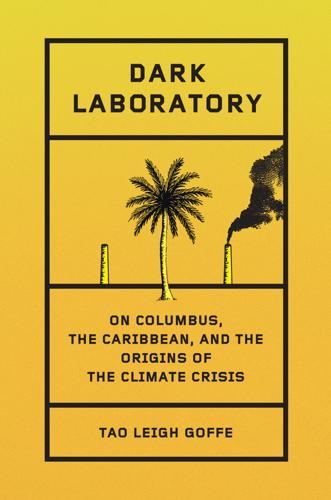
Dark Laboratory: On Columbus, the Caribbean, and the Origins of the Climate Crisis
by
Tao Leigh. Goffe
Published 14 Mar 2025
This chapter pairs extractive British colonialism in Jamaica with its parallels on the island of Hong Kong. I visit with Maroon leaders to learn more about the ongoing battle for climate justice and Black sovereignty. Chapter 2 travels to 1492 and the ripple effects of Christopher Columbus’s arrival in the Caribbean. What of the Chinese admiral Zheng He, who is said to have circumnavigated the world before Columbus? Each island of the Caribbean archipelago is a parallel universe of cross-pollination, mineral extraction, amalgamation, transplantation, and animal husbandry. I visit Kalinago Nation to understand more about the Indigenous Caribbean experience and futurism.
…
Canada is home to 75 percent of global mining companies, which are headquartered there.[7] Toronto is the heart of many colonial extractive prospecting projects and lists 60 percent of these corporations on the Toronto Stock Exchange (TSX). China’s presence in the Caribbean long predates the twenty-first century; the earliest mass labor migration to Jamaica took place in 1854. Before the voyages of indentured laborers, we must consider the seafaring of Chinese admiral Zheng He, who is said to have arrived in the Americas in 1421. Though often dismissed as counterfactual history by Western historians, how does Zheng He alter the possible definitions of colonial desire? China’s colonialisms are multiple, and their legacies are evident across Southeast Asia and do not manifest with the same extractivist design of European settler colonialism.

The Future Is Asian
by
Parag Khanna
Published 5 Feb 2019
Ming China was an export juggernaut, trading from its Yellow River port of Guangdong and the Yangtze River ports of Shanghai and Nanjing, perhaps the largest city in the world at the time with half a million residents. To demonstrate China’s incredible wealth, Yongle ordered the Chinese Muslim admiral Zheng He to undertake grand expeditions that established relations with Luzon and Sulu (today’s Philippines), Brunei, and Sumatra, and across the Indian Ocean to East Africa. At home, Yongle reconstructed the Grand Canal, built the Forbidden City (modern-day Bejing), instituted a rigorous Confucian examination system, and commissioned a comprehensive encyclopedia of Chinese culture and history.
…
Chinese-ness is often perceived of as hewing to the Han ethnicity, but there is no one pure “Chinese” genetic stock, given the historical importance of the Mongol-Turkic Sui rulers, Mongol overlords, and Manchu dynasties. The Chinese imperial administration, especially under the cosmopolitan Tang, employed countless bureaucrats and generals from other Asian cultures, with communities of Arabs, Turks, Persians, and Mongols settled throughout the empire. During the Ming Dynasty, the admiral Zheng He, a distant descendant of a Song-era Muslim Persian migrant, led the Ming’s famous maritime voyages as far as Africa. The later Qing military was dominated not by Han but by Mongols and Manchus. Similarly, Arab, Persian, and Turkic fusion made the Abbasid Caliphate an impressive intellectual, cultural, and military power, one capable of penetrating India and establishing the Delhi Sultanate.

Connectography: Mapping the Future of Global Civilization
by
Parag Khanna
Published 18 Apr 2016
Though the Dutch used force in alliance with local rulers to oust the Portuguese and establish administrative control—particularly in Sri Lanka and Indonesia—the objective was to secure trading posts and harness natural resource wealth, not to conquer the world for God or country.*2 Two hundred years earlier, the great Ming admiral Zheng He’s fifteenth-century “Treasure Fleet” voyages had also established China’s peaceful relations with kingdoms as far as East Africa. Like Ming China, the Dutch were about trade, not territory: They were an empire of enclaves. China has had plenty of time to study how to set up and manage such overseas enclaves because that is what European powers did for centuries in China itself through their colonial concessions such as Hong Kong and Macau.
…
In 2013, it signed a twenty-five-year agreement to begin Iranian gas imports. Furthermore, together with India—from which one-third of Oman’s population hails, including many citizens whose merchant houses have built up fortunes—Oman has planned undersea pipelines to distribute Iranian natural gas. — CHINA IS NOT A STRANGER to the Indian Ocean either, having sent Admiral Zheng He’s “Treasure Fleet” as far as East Africa a full century before Portugal rounded Africa’s southern cape. But it was European colonial powers that competed over the lucrative Indian Ocean spice trade as intensely as they did for Latin America’s gold and silver. The Portuguese established forts among the coastal Indian kingdoms of Calicut, Goa, Kochi, and Kannur, and the island kingdom of Kotte, gradually displacing the Venetian and Ottoman traders who previously dominated Indian Ocean trade.
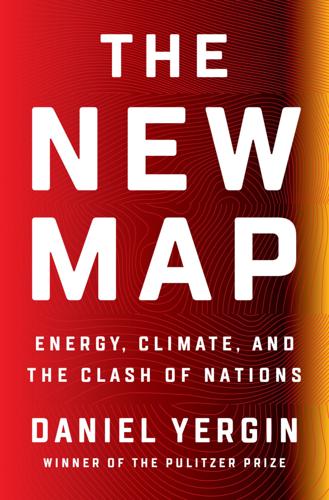
The New Map: Energy, Climate, and the Clash of Nations
by
Daniel Yergin
Published 14 Sep 2020
But what was left on the table was the jarring juxtaposition of “interests”—China’s “core interests” versus the United States’ “national interests.”4 Chapter 21 THE ROLE OF HISTORY The collision over the South China Sea is a complex matter. For as Singapore’s eminent diplomat Tommy Koh, who led the UN Law of the Seas negotiations, observed, “The South China Sea is about law, power, and resources, and about history.” Indeed, it is a confrontation vexed by history.1 A symbol of China’s historic claims is Admiral Zheng He, otherwise known as the “Three-Jeweled Eunuch.” He was the paramount admiral among several eunuchs who commanded China’s huge fleets in the fifteenth century. The ships carried a wide range of Chinese goods and the most advanced ordnance of the day—guns, cannonballs, and rockets. The biggest boats were the massive “treasure ships,” as much as ten times bigger than the ship that, almost a century later, would carry Christopher Columbus to the New World.
…
And now in Kazakhstan in 2013, Xi described Beijing’s grand plan as the “new silk road.”3 A month after the Astana speech, Xi, in front of the Indonesian parliament, introduced the second part of the new strategy. This time he recalled the spirit of the Three-Jeweled Eunuch, the fifteenth-century admiral Zheng He, whose voyages had touched down in what is today Indonesia before sailing on to the “Western seas”—leaving “many stories of friendly exchanges,” said Xi, “many of which are still widely told today.” And now, he said, China would work with Southeast Asian countries “to build the Maritime Silk Road of the 21st century.”4 The Chinese have shortened “One Belt One Road,” in English, to the BRI—“Belt and Road Initiative.”
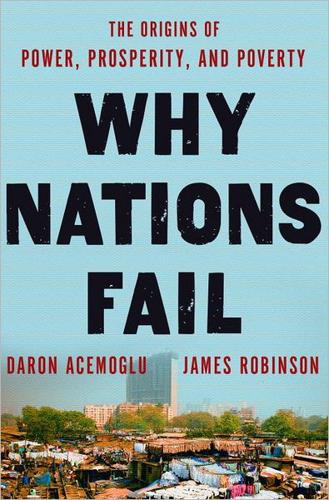
Why Nations Fail: The Origins of Power, Prosperity, and Poverty
by
Daron Acemoglu
and
James Robinson
Published 20 Mar 2012
He banned private individuals from trading with foreigners and would not allow Chinese to sail overseas. In 1402 Emperor Yongle came to the throne and initiated one of the most famous periods of Chinese history by restarting government-sponsored foreign trade on a big scale. Yongle sponsored Admiral Zheng He to undertake six huge missions to Southeast and South Asia, Arabia, and Africa. The Chinese knew about these places from a long history of trading relations, but nothing had ever happened on this scale before. The first fleet included 27,800 men and 62 large treasure ships, accompanied by 190 smaller ships, including ones specifically for carrying freshwater, others for supplies, and others for troops.
…
The conversation between Nicholas and Mikhail is quoted from Saunders (1992), p. 117. Kankrin’s quote on railways is in Owen (1991), pp. 15–16. The speech by Nicholas to the manufacturers is reproduced from Pintner 967), p. 100. The quote from A. A. Zakrevskii is from Pintner (1967), p. 235. On Admiral Zheng, see Dreyer (2007). The economic history of early Modern China is covered by Myers and Wang (2002). The quote from T’ang Chen is quoted from Myers and Wang, pp. 564–65. See Zewde (2002) for an overview of the relevant Ethiopian history. The data on how extractive Ethiopia has been historically come from Pankhurst (1961), as do all the quotes we reproduce here.
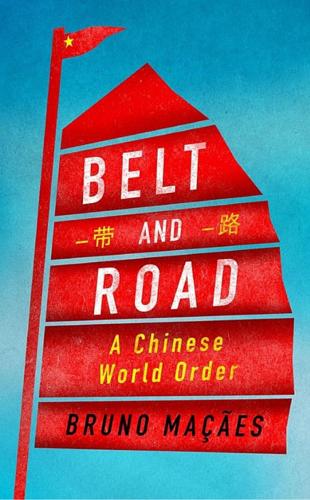
Belt and Road: A Chinese World Order
by
Bruno Maçães
Published 1 Feb 2019
There will be obvious and notable successes—projects that capture our imagination as they get implemented, advances in technology happening faster than expected—helping propel the initiative forward and these will be sufficient to keep the political consensus around it. But the historical analogy always invoked in official statements and documents on the Belt and Road may serve as a warning sign: after all, glorious as they were, the expeditions that the Chinese Admiral Zheng led across the full extension of the Indian Ocean in the fifteenth century were abandoned by later Ming emperors, opening the way for European control over Asia, starting with the Portuguese at the end of the century. Might a similar fate await the Belt and Road? Over the second half of 2018, signs of internal discontent with the Belt and Road started to emerge into public view, a development made all the more surprising by the tight control over public expressions of doubt over major policy lines.
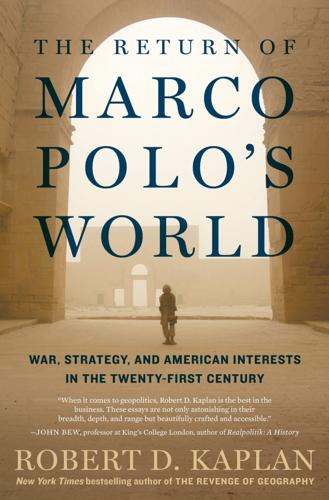
The Return of Marco Polo's World: War, Strategy, and American Interests in the Twenty-First Century
by
Robert D. Kaplan
Published 6 Mar 2018
After all, China is only able to act aggressively in its adjacent seas because it is now, for the time being, secure on land to a degree it has never been in its history. Threatened constantly by the peoples of the steppe in the west, southwest, and north, with the exception of the voyages of Admiral Zheng He during the Ming Dynasty in the early fifteenth century, China never actually did have a maritime tradition in the east. But globalization, with its exaggerated emphasis on sea lines of communication, has necessitated Chinese power projection into the blue-water extensions of its own continental landmass.
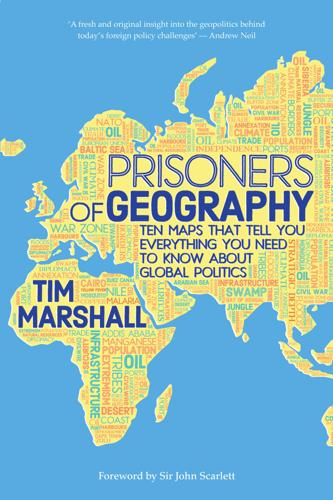
Prisoners of Geography: Ten Maps That Explain Everything About the World (Politics of Place)
by
Tim Marshall
Published 10 Oct 2016
What would happen if the resources required to make the stuff dried up, if someone else got them first, or if there was a naval blockade of your goods—in and out? Well, for that, you’d need a navy. The Chinese were great sea voyagers, especially in the fifteenth century, when they roamed the Indian Ocean; Admiral Zheng He’s expedition ventured as far as Kenya. But these were moneymaking exercises, not power projections, and they were not designed to create forward bases that could be used to support military operations. Having spent four thousand turbulent years consolidating its landmass, China is now building a blue-water navy.

Losing Control: The Emerging Threats to Western Prosperity
by
Stephen D. King
Published 14 Jun 2010
In the early 1430s, Chinese leaders chose to destroy their entire ocean-going fleet. As a symbolic act, it was, economically, one of the most costly moments in human history. At the time, Chinese ships were bigger and better than their European counterparts. Chinese sailors navigated using the magnetic compass as a matter of routine. And, in Admiral Zheng He, a seven-foot tall Muslim Mongolian eunuch, China had the greatest sailor of the day, whose exploits included visits to thirty-seven countries over twenty-eight years with a fleet of around 300 ships and 28,000 sailors (it’s now thought that Zheng found the Americas before Columbus). Through closing itself off to the rest of the world, China was starved of the ideas and innovations that contributed so much to the productivity gains seen in Europe over the last five hundred years.
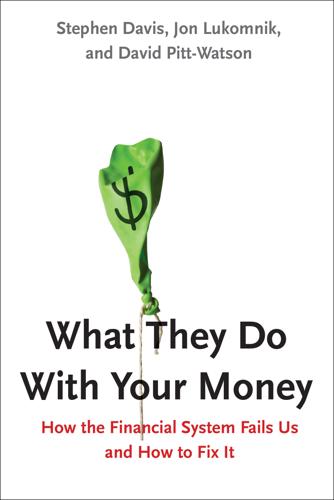
What They Do With Your Money: How the Financial System Fails Us, and How to Fix It
by
Stephen Davis
,
Jon Lukomnik
and
David Pitt-Watson
Published 30 Apr 2016
In his words, “Organisations, markets and economies are not just like evolutionary systems, they truly, literally are evolutionary systems.” Beinhocker, Origin of Wealth, 187. 47. The navigational skills and commercial incentives that took European sailors around the Cape of Good Hope were the same ones that led Columbus to sail west across the Atlantic to America. 48. The voyages of Chinese admiral Zheng He took place between 1405 and 1433. Philip Snow, The Star Raft: China’s Encounters with Africa (Cornell University Press, 1989). 49. Perhaps the seventeenth-century Dutch playwright Joost van der Vondel caught the spirit of the age with this ditty: “We Amsterdammers journey …, Where ever profit leads us, to every sea and shore, For love of gain, the wide world’s harbors we explore.”
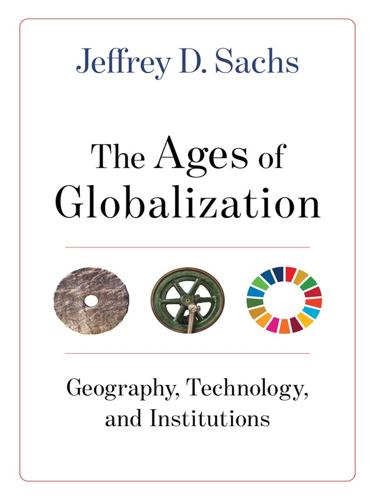
The Ages of Globalization
by
Jeffrey D. Sachs
Published 2 Jun 2020
Yet before we can appreciate the vast implications of these two voyages and their aftermath, we should first address a more basic question: Why did Western Europe rather than East Asia come to dominate the seas, and thereby the world? The Great Chinese Reversal In the early fifteenth century, China’s navigational capacity was second to none in the world. The famed seven voyages of Admiral Zheng He during the early Ming Dynasty, in the first three decades of the fifteenth century, are justly remembered hundreds of years later as remarkable naval accomplishments of China.1 These voyages of enormous fleets sailed from China to Southeast Asia, through the South China Sea and the Malacca Pass, around Java and Sumatra, into the Indian Ocean, and all the way to East Africa, Arabia, the coasts of India, and back to China.
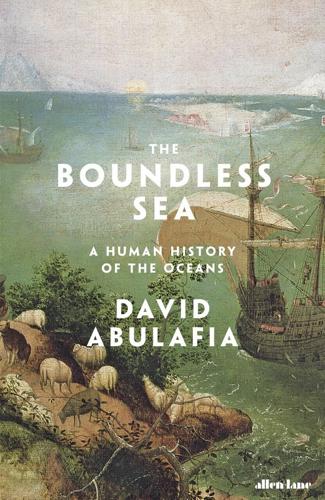
The Boundless Sea: A Human History of the Oceans
by
David Abulafia
Published 2 Oct 2019
Yong-le was a ruthless and extravagant ruler with grandiose plans – not just naval expeditions and land campaigns, but the beautification of Beijing and the active patronage of culture. He rebuilt the Grand Canal linking Beijing to the Chinese rivers and assuring the capital of regular grain supplies.2 His overseas expeditions, led by Admiral Zheng He (Cheng Ho) have attracted attention not just in modern times but under later Ming rulers – a certain Luo Mao-deng wrote a novel about the Ming voyages that was published in 1597 under the title The Grand Director of the Three Treasures Goes Down to the Western Ocean , and, despite its obvious fantasy, including a visit to the Underworld, attempts have been made to use it as a reliable source for all those aspects of these voyages that are not recorded in the official histories and inscriptions that survive.3 Precisely because of the sheer scale of the Ming voyages, Zheng He has attracted most of the attention from historians of Yong-le’s reign: there were 255 ships on the first voyage and 249 on the second, and a total of seven voyages, according to his biographer, Edward Dreyer, who counts 27,550 men on the final voyage, roughly the same as the first.
…
Once again, what comes through powerfully is the insistence of the Chinese on their superiority as a moral force – Confucian ideas blended with those of Yong-le’s Mongol predecessors, with their ruthless demands for recognition of their own ‘Mandate from Heaven’. Ming court culture owed much to the Mongols, including many of the costumes worn at court and the passion the Ming emperors showed for hunting and archery.13 Sending fleets overseas under the command of Admiral Zheng He was, then, a highly conspicuous and extremely expensive way of doing what earlier Chinese emperors had long been trying to do. Some historians have looked for quite different explanations. The most peculiar is that Yong-le was trying to run to ground his predecessor and rival, Jian-wen, who, according to one rumour, had escaped to a remote island across the sea.14 Other arguments that have been advanced include the simple idea that Zheng He’s voyages were motivated by curiosity.
…
Drainage of bullion out of China led the Song and Yuan emperors to create a paper currency. 17. An early fourteenth-century scroll commemorating the heroism of the warrior Takezaki Suenaga in the wars against the Mongols. Here a Mongol ship is under attack from Japanese warriors in 1281. 18. A seventeenth-century printed map of the voyages of Admiral Zheng He at the start of the fifteenth century. His ships reached east Africa and the Red Sea. 19. A late medieval image of a sewn-plank ship bound from Basra in Iraq. Black slaves bail out water and work on deck, while Arab, Persian and Indian passengers sit below. 20. Irish legend told of the intrepid navigator St Brendan, who sailed into the Atlantic with his monks looking for remote islands where they could live far from ordinary human company. 21.
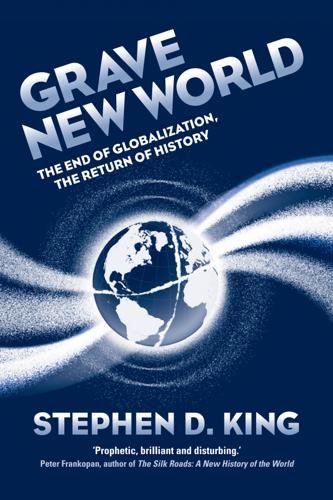
Grave New World: The End of Globalization, the Return of History
by
Stephen D. King
Published 22 May 2017
Yet in a fifteenth-century version of the Global Financial Crisis, China’s economy became unstuck – largely as a result of excess production at home and excess debts abroad. In the early 1400s, China was benefiting hugely from a successful export machine, the revenues from which were being channelled into the total renovation of the Grand Canal between Beijing and Hangzhou and the accumulation of a vast navy under the command of Admiral Zheng He, probably the most fearsome eunuch that ever lived. Unfortunately, however, foreigners were not always able to produce the kinds of goods that the Chinese themselves wanted. The result ultimately was non-payment of bills, a collapse in confidence, a hoarding of silver (the internationally traded currency of the era) and the beginnings of fifteenth-century austerity.
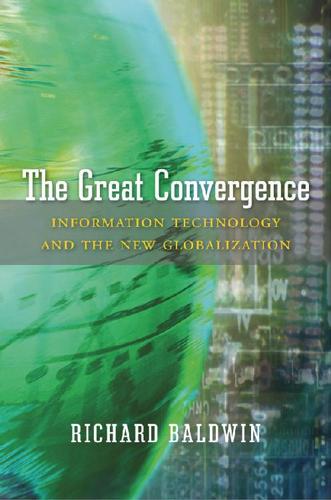
The Great Convergence: Information Technology and the New Globalization
by
Richard Baldwin
Published 14 Nov 2016
Chinese civilization flourished in these centuries, reaching new heights in art, science, and manufacturing under the Yuan and Ming Dynasties. This was also when Chinese ships roamed the high seas. As the historian Edward Dreyer recounts in his book Zheng He: China and the Oceans in the Early Ming Dynasty, the Chinese Admiral Zheng sailed from China to Southeast Asia, India, Persia, and Africa in ships that dwarfed European seagoing vessels in size and sophistication.9 The Silk Road closure isolated Europe and the Middle East from these Chinese advances. Economic Dominance by Middle East and Asia When Silk Road trade stopped in the fifteenth century, Asia dominated the world economy.
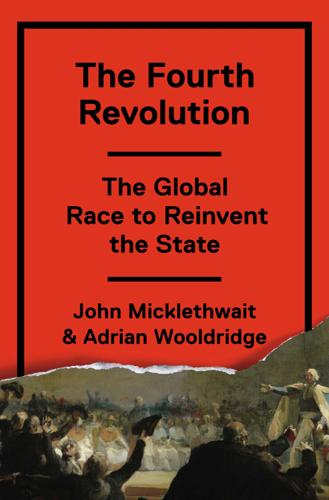
The Fourth Revolution: The Global Race to Reinvent the State
by
John Micklethwait
and
Adrian Wooldridge
Published 14 May 2014
“They laugh at us for it, and well may, avouching that they of all the earth are two-eyed men, the Egyptians the one-eyed, and all the world else, stark blind.”14 China operated on a grander scale than Europe. The Imperial Quarter of Beijing had a population of 300,000, consisting of the imperial family and its bureaucrats, eunuchs, guards, merchants, and other hangers-on. The Spanish Armada, which had so terrified Mrs. Hobbes, was nothing compared with the “treasure fleets” that Admiral Zheng He had taken to India, the Horn of Africa, and the Strait of Hormuz in the early fifteenth century.15 And the attempts to systematize Western learning in the seventeenth century that so fascinated Hobbes paled against the “compendium of learning” set in motion by the Ming Emperor Yongle (1360–1424), which drew on the talents of more than two thousand scholars and filled more than eleven thousand volumes—and remained the largest encyclopedia in the world until Wikipedia surpassed it in 2007.

China's Good War
by
Rana Mitter
A range of historical examples, many relating to Chinese ideas of “national humiliation,” are used to promote the view that China is a state that has been under siege in the modern era and has every right to be defensive about its status.13 Other historical comparisons have been used in more recent years to suggest a new expansiveness, such as the revival of interest in the voyages of the Ming admiral Zheng He, who visited Southeast Asia and East Africa, among other destinations.14 China has used its World War II history for particular purposes in international relations. The revival of claims in 2013 on the disputed Diaoyu / Senkaku Islands, derived from the 1943 Cairo Conference, is specifically aimed at resolving a still-current territorial dispute with Japan.
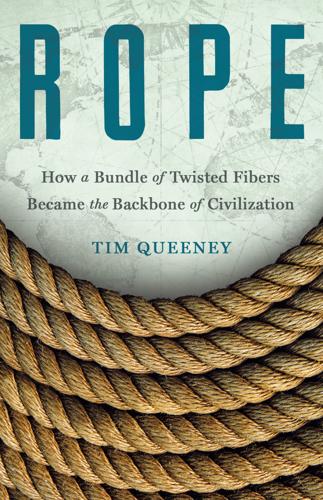
Rope: How a Bundle of Twisted Fibers Became the Backbone of Civilization
by
Tim Queeney
Published 11 Aug 2025
Magellan didn’t make it—he was killed by Mactan warriors in the Philippines in 1521—but one of his ships continued westward to Spain in 1522, marking the first recorded circumnavigation of the planet.9 CHINESE TREASURE FLEETS China also was an early giant in the Age of Sail and Age of Exploration. In 1405, ninety-three years before da Gama reached Calicut in India, a huge fleet of Chinese ships, led by Admiral Zheng He, departed China headed south. Not only was the fleet expansive in number of ships, with various sources putting the count at more than 315 (along with thousands of troops—the entire complement was put at thirty thousand men),10 the ships themselves were a far cry from the diminutive caravels of Dias and da Gama.

Beyond: Our Future in Space
by
Chris Impey
Published 12 Apr 2015
But the eye-popping number is the death rate from driving, giving a lifetime probability of death of one in 84, or 1.1 percent. So, assuming it’s a once-in-a-lifetime joyride, traveling into space is four hundred times more dangerous than flying but only twice as risky as driving (Figure 23). _________ In the early fifteenth century, the eunuch Chinese admiral Zheng He sent a fleet of 320 ships and 18,000 men on seven major voyages to India, Arabia, and Africa. Their goal: to seek out new curiosities and animals and make any civilizations they encountered submit and swear fealty to the Chinese emperor. But that vast effort was squashed. Nobody in China was allowed to own a ship and foreign trade was discouraged.
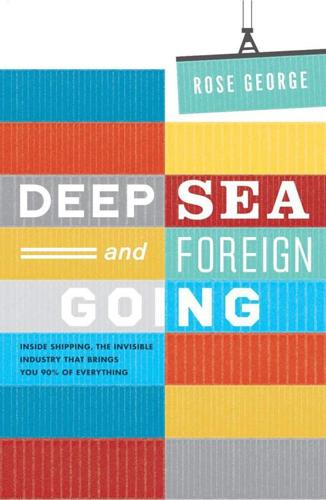
Deep Sea and Foreign Going
by
Rose George
Published 4 Sep 2013
The IRTC is patrolled by military ships from three coalition counter-piracy forces: one from the EU, one run by NATO, and the Combined Task Force (CTF-151), led by the United States, with a membership of nations that is described as ‘fluid’. Besides the task forces, there are other navies acting independently of coalitions, including those of Russia, Korea, India, Japan and China. It is the first major deployment of the Chinese Navy since 1433, when Admiral Zheng came here, visited the Sultan of Malindi, and took home a giraffe. The Chinese Navy is on piracy patrol, but it is also well placed to support its growing economic presence in Africa. If you want a window into future geopolitics, the Indian Ocean has a good view. Since some Somalis took to piracy in the mid-1990s, their range and nerve has grown.

The Coming of Neo-Feudalism: A Warning to the Global Middle Class
by
Joel Kotkin
Published 11 May 2020
Cowgill (Tucson: University of Arizona Press, 1988), 176–77; Charles O. Hucker, China’s Imperial Past: An Introduction to Chinese History and Culture (Stanford: Stanford University Press, 1975), 52–53. 45 McNeill, The Pursuit of Power, 31–33. 46 Andrew R. Wilson, “Southern Trade and Northern Defense: Ming Mission to Manila,” in Chinese Diaspora Since Admiral Zheng He, ed. Leo Suryadinata, (Singapore: Chinese Heritage Center, 2007), 99–111. 47 Hucker, China’s Imperial Past, 10–11, 57, 84, 176. 48 McNeill, The Pursuit of Power, 28–48, 69. 49 Edward Luce, In Spite of the Gods: The Rise of Modern India (New York: Anchor Books, 2006), 71; Romila Thapar, History of India, vol. 1 (New York: Penguin, 1990), 77–78, 239; Moore, Social Origins of Dictatorship and Democracy, 317–19. 50 John Hale, The Civilization of Europe in the Renaissance (New York: Touchstone, 1993), 389–90; J.
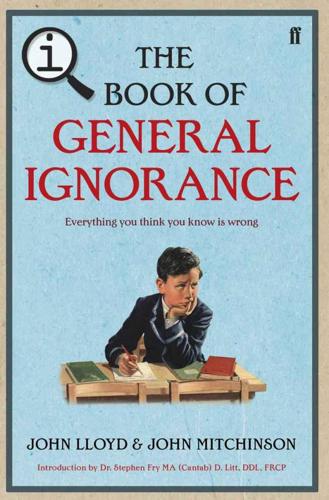
QI: The Book of General Ignorance - The Noticeably Stouter Edition
by
Lloyd, John
and
Mitchinson, John
Published 7 Oct 2010
He circumnavigated the world three times, invented the first wind map and is cited more than 1,000 times in the OED, introducing words like avocado, barbecue, breadfruit, cashew, chopsticks, settlement and tortilla into English. In recent years, there has been a lot of lobbying in favour of the Chinese as the continent’s first foreign visitors. There is some archaeological evidence that the great Ming Dynasty admiral Zheng He (1371–1435) landed near Darwin in 1432. Without having to swallow the whole ‘Zheng He discovered the entire world’ theory cooked up by Gavin Menzies in his best-selling 1421: The Year the Chinese Discovered America, there seems to be a good chance that this extraordinary fifteenth-century voyager (he was a Muslim and a eunuch) did reach the northern coast of Australia.
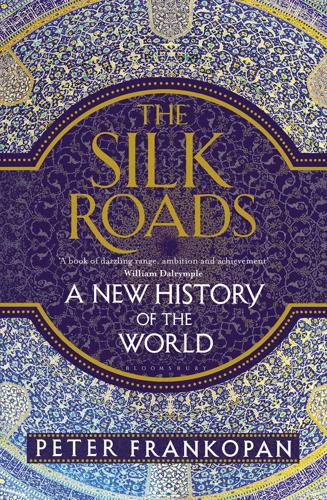
The Silk Roads: A New History of the World
by
Peter Frankopan
Published 26 Aug 2015
In fact, the towns on the southern coast of India did not operate in a vacuum, and competed with each other fiercely. Cochin emerged as a rival to Calicut in the fifteenth century after an aggressively competitive tax regime succeeded in attracting considerable trade. This became something of a virtuous circle, as it caught the eye of the Chinese. A series of major expeditions led by the great admiral Zheng He, a Muslim eunuch, to demonstrate China’s naval power, assert its influence and gain access to long-distance trade routes deep into the Indian Ocean, the Persian Gulf and the Red Sea, paid special attention to building up ties with the ruler of Cochin.84 These missions were part of an increasingly ambitious set of measures taken by the Ming dynasty that replaced the Mongol Yuan rulers in the middle of the fourteenth century.
…
The gold of West Africa was famous across the Mediterranean. The great Malian king, Mansa Musa, ‘the richest and most noble’ of rulers, holds a large golden nugget in this detail from the Catalan Atlas, 1375. China became increasingly interested in the world beyond the Pacific in the fifteenth century. The Chinese Admiral Zheng He explored the Indian Ocean and the coast of East Africa. This wall painting from the Chinese Temple Shrine, Penang, Malaysia, shows one of his ships. Cortés and Xicoténcatl, whose alliance brought about the demise of the Aztecs. Cortés claimed to suffer from an illness that could only be cured by gold.

Exceptional People: How Migration Shaped Our World and Will Define Our Future
by
Ian Goldin
,
Geoffrey Cameron
and
Meera Balarajan
Published 20 Dec 2010
The accelerating pace of cross-cultural trade also attuned more general patterns of behavior in the region toward trade, augmenting “the everyday routines of life” through the growth of specialization and the spread of the price mechanism. While Europeans would be the first to open up the Atlantic route to the Americas, in the early fifteenth century, the Chinese first established contact over the Indian and Pacific Oceans. Between 1403 and 1433, Admiral Zheng He, under the patronage of the Ming Emperor Zhu Di, undertook a series of explorations with fleets that at times numbered up to 300 ships, carrying 20,000 men. These sailed from China, through Southeast Asia across India to Eastern Africa, and some accounts even suggest that he rounded the Cape of Good Hope almost a century before Bartolomeu Dias did—heading in the opposite direction.100 The ships used by Zheng He were about ten times the average size of the largest ships then built in Europe.
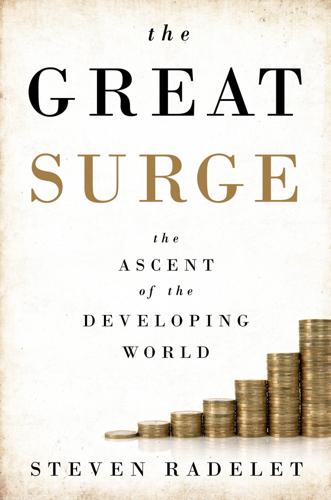
The Great Surge: The Ascent of the Developing World
by
Steven Radelet
Published 10 Nov 2015
Hereafter . . . the inhabitants of all the different quarters of the world may arrive at that equality of courage and force which, by inspiring mutual fear, can alone overawe the injustice of independent nations into some sort of respect for the rights of one another. But nothing seems more likely to establish this equality of force, than that mutual communication of knowledge, and of all sorts of improvements, which an extensive commerce . . . carries along with it. —Adam Smith, 17761 ON JULY 11, 1405, CHINESE Admiral Zheng he weighed anchor in nanjing harbor and commanded his great Ming armada to sail southwest and commence a two-year, six-thousand-mile journey that would bring them to today’s Vietnam, Indonesia, Sri Lanka, and, eventually, the Malabar Coast of India. Zheng’s fleet was massive, with 317 ships and twenty-seven thousand men, equivalent to the population of a small city.

The Ascent of Money: A Financial History of the World
by
Niall Ferguson
Published 13 Nov 2007
The average North American colonist, it has been claimed, had a standard of living not significantly superior to that of the average Chinese peasant cultivator. Indeed, in many ways the Chinese civilization of the Ming era was more sophisticated than that of early Massachusetts. Beijing, for centuries the world’s largest city, dwarfed Boston, just as Admiral Zheng He’s early-fifteenth-century treasure ship had dwarfed Christopher Columbus’s Santa Maria. The Yangtze delta seemed as likely a place as the Thames Valley to produce major productivity-enhancing technological innovations.4 Yet between 1700 and 1950 there was a ‘great divergence’ of living standards between East and West.
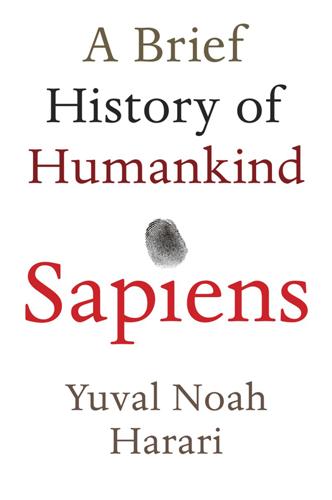
Sapiens: A Brief History of Humankind
by
Yuval Noah Harari
Published 1 Jan 2011
The closest precedents to the modern European empires were the ancient naval empires of Athens and Carthage, and the medieval naval empire of Majapahit, which held sway over much of Indonesia in the fourteenth century. Yet even these empires rarely ventured into unknown seas – their naval exploits were local undertakings when compared to the global ventures of the modern Europeans. Many scholars argue that the voyages of Admiral Zheng He of the Chinese Ming dynasty heralded and eclipsed the European voyages of discovery. Between 1405 and 1433, Zheng led seven huge armadas from China to the far reaches of the Indian Ocean. The largest of these comprised almost 300 ships and carried close to 30,000 people.7 They visited Indonesia, Sri Lanka, India, the Persian Gulf, the Red Sea and East Africa.
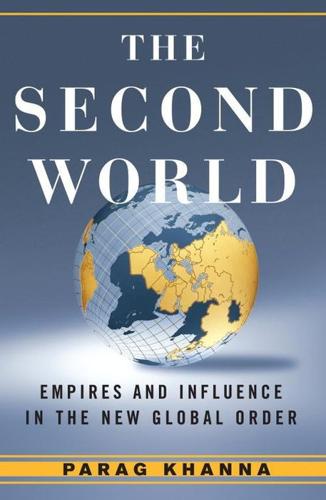
Second World: Empires and Influence in the New Global Order
by
Parag Khanna
Published 4 Mar 2008
A thousand years ago, globalization had Chinese characteristics, for it was the printing press, gunpowder, and the compass that had spread from east to west. Today China portrays itself like a great merchant ship once again navigating globalization’s waters—in marked contrast to an American aircraft carrier. The iconic inspiration for China’s new image is Admiral Zheng He, whose seven naval voyages in the early fifteenth century dwarfed those of Columbus and Vasco da Gama, shuttling Ming Dynasty ambassadors as far as the east coast of Africa, seeding the Chinese diaspora from Malacca to Kenya, and returning with sulfur from Indonesia and spices from India’s Malabar coast.6 Were it not for Emperor Zhu Gaozhi’s decision to ban costly foreign excursions, China could have become the greatest continental and maritime superpower of the age.
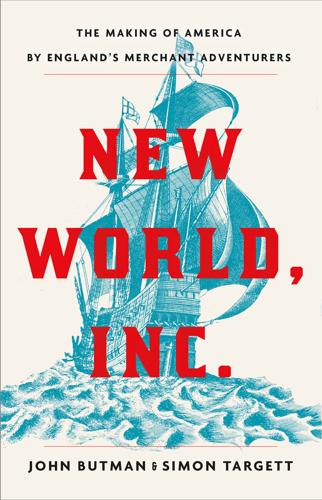
New World, Inc.
by
John Butman
Published 20 Mar 2018
Yet much of what he had to say about China was accurate, and by the 1500s the information Polo had gathered was accepted far and wide, as if nothing had changed and as if “the Great Khan” still ruled the country. But Kublai Khan was long dead. A new dynasty, the Ming, was in power. For a while, under their leadership, Chinese culture had blossomed. In a series of remarkable voyages of discovery in the early fifteenth century, a eunuch admiral, Zheng He, took his fleet of giant ocean-going treasure ships—four hundred feet long, with nine masts, nearly one hundred support vessels, and a crew of 28,000 sailors—to the Persian Gulf and the east coast of Africa.9 But these expeditions were abruptly halted in the 1430s when China turned inward, shunning the outside world.
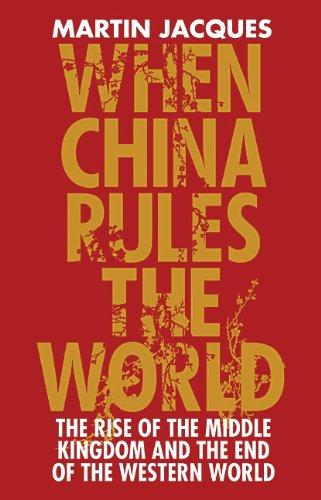
When China Rules the World: The End of the Western World and the Rise of the Middle Kingdom
by
Martin Jacques
Published 12 Nov 2009
It is true that China also had colonies - newly acquired territories achieved by a process of imperial expansion from 1644 until the late eighteenth century - but these were in the interior of the Eurasian continent, bereft of either large arable lands or dense populations, and were unable to provide raw materials on anything like the scale of the New World.20 South-East Asia, which was abundant in resources, would have been a more likely candidate to play the role of China’s New World. Admiral Zheng’s exploits in the early fifteenth century, with ships far larger than anything that Europe could build at the time, show that China was not lacking the technical ability or financial means, but the attitude of the Chinese state towards overseas interests and possessions was quite different from that of Europe.

Debt: The First 5,000 Years
by
David Graeber
Published 1 Jan 2010
The technique seems to have been developed almost as a kind of trick when dealing with the “northern barbarians” of the steppes, who always threatened Chinese frontiers: a way to overwhelm them with such luxuries that they would become complacent, effeminate, and unwarlike. It was systematized in the “tribute trade” practiced with client states like Japan, Taiwan, Korea, and various states of Southeast Asia, and for a brief period from 1405 to 1433, it even extended to a world scale, under the famous eunuch admiral Zheng He. He led a series of seven expeditions across the Indian Ocean, his great “treasure fleet”—in dramatic contrast to the Spanish treasure fleets of a century later—carrying not only thousands of armed marines, but endless quantities of silks, porcelain, and other Chinese luxuries to present to those local rulers willing to recognize the authority of the emperor.20 All this was ostensibly rooted in an ideology of extraordinary chauvinism (“What could these barbarians possibly have that we really need, anyway?”)
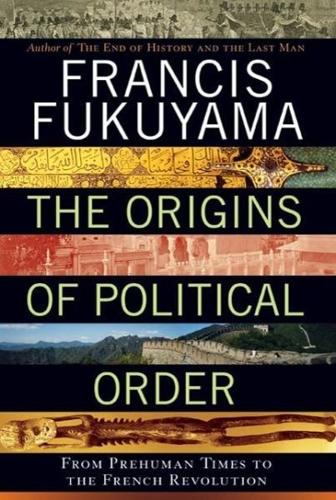
The Origins of Political Order: From Prehuman Times to the French Revolution
by
Francis Fukuyama
Published 11 Apr 2011
What China did not have was the spirit of maximization that economists assume is a universal human trait. An enormous complacency pervaded Ming China in all walks of life. It was not just emperors who didn’t feel it necessary to extract as much as they could in taxes; other forms of innovation and change simply didn’t seem to be worth the effort. The eunuch admiral Zheng He sailed across the Indian Ocean and discovered new trade routes and civilizations. This didn’t provoke curiosity, however, and the voyages were never followed up. The next emperor cut the navy’s budget as an economizing move, and the Chinese Age of Discovery was over almost before it had begun.

Accessory to War: The Unspoken Alliance Between Astrophysics and the Military
by
Neil Degrasse Tyson
and
Avis Lang
Published 10 Sep 2018
By the end of the fourteenth century, Arab and Indian traders had established themselves along the East African coast as far south as present-day Mozambique. At the beginning of the fifteenth century, a heavily armed fleet of more than three hundred Chinese vessels, commanded by the formidable eunuch admiral Zheng He and carrying nearly 28,000 soldiers and half a dozen astrologers, had sailed forth to impress and intimidate China’s southern neighbors by a lavish display of both Ming treasures and military might.32 Last but certainly not least from the perspective of Western Europe, the Portuguese had begun to sail the Atlantic far and wide.
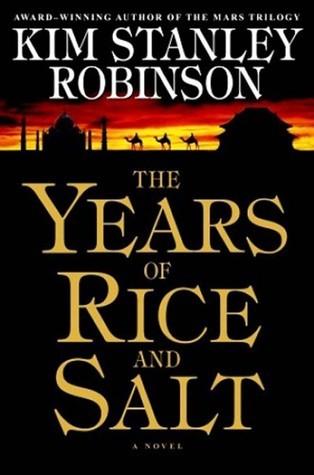
The Years of Rice and Salt
by
Kim Stanley Robinson
Published 2 Jun 2003
They rule the Chinese Emperor, and they hate everyone else. You can see how it will be,' waving around at the immense ship. 'They'll castrate all of us. It's the end coming.' 'You Christians like to say that, but so far it's only been true for you.' 'God took us first to shorten our suffering. Your turn will come.' 'It's not God I fear, but Admiral Zheng He, the Three Jewel Eunuch. He and the Yongle Emperor were friends when they were boys, and the Emperor ordered him castrated when they were both thirteen. Can you believe it? Now the eunuchs do it to all the boys they take prisoner.' In the days that followed Kyu got hotter and hotter, and was seldom conscious.

China: A History
by
John Keay
Published 5 Oct 2009
The largest vessels in this fleet, indeed in the world at that time, were constructed on the Qinhuai river where it meets the Yangzi at Nanjing. Others would follow, making Nanjing, for the next three decades, the shipbuilding capital of the world’s greatest maritime power. For with the 1405 departure of Admiral Zheng He in command of China’s first world armada, the Ming were poised not just to emulate Khubilai Khan’s overseas adventures but sensationally to upstage them. 13 THE RITES OF MING 1405–1620 FROM THE EDGE OF THE SKY TO THE ENDS OF THE EARTH THE PIVOTAL POSITION OF AN EMPEROR, as the Son of Heaven, in the all-transcending operation of the cosmos entailed heavy responsiblities.
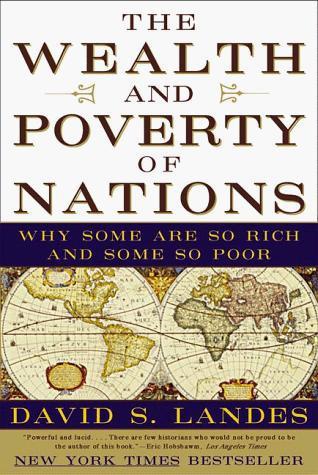
The Wealth and Poverty of Nations: Why Some Are So Rich and Some So Poor
by
David S. Landes
Published 14 Sep 1999
Other ships met other needs: eight-masted “horse ships” carrying mounts to South Asia, which for climatic reasons could not easily raise these animals, along with building and repair materials; seven-masted supply ships, carrying principally food; six-masted troop transports; five-masted warships for naval combat; and smaller fast boats to deal with pirates. The fleet even included water tankers, to ensure a fresh supply for a month or more. The first of these fleets, that of the eunuch admiral Zheng He (Cheng-ho) in 1405, consisted of 317 vessels and carried 28,000 men.10 From 1404 to 1407, China undertook an orgy of shipbuilding and refitting. Whole seaboard provinces were drawn into the effort, while inland forests were stripped for timber. Hundreds of households of carpenters, smiths, sailmakers, ropemakers, caulkers, carters and haulers, even timekeepers, were moved by fiat, grouped into teams, domiciled in yards next to their work.
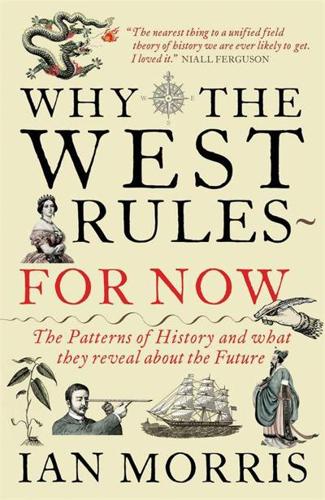
Why the West Rules--For Now: The Patterns of History, and What They Reveal About the Future
by
Ian Morris
Published 11 Oct 2010
Right through the twentieth century a complicated dance went on in the West as historians uncovered facts that did not seem to fit the long-term lock-in stories, and long-termers adjusted their theories to accommodate them. For instance, no one now disputes that when Europe’s great age of maritime discovery was just beginning, Chinese navigation was far more advanced and Chinese sailors already knew the coasts of India, Arabia, East Africa, and perhaps Australia.* When the eunuch admiral Zheng He sailed from Nanjing for Sri Lanka in 1405 he led nearly three hundred vessels. There were tankers carrying drinking water and huge “Treasure Ships” with advanced rudders, watertight compartments, and elaborate signaling devices. Among his 27,000 sailors were 180 doctors and pharmacists. By contrast, when Christopher Columbus sailed from Cadiz in 1492, he led just ninety men in three ships.
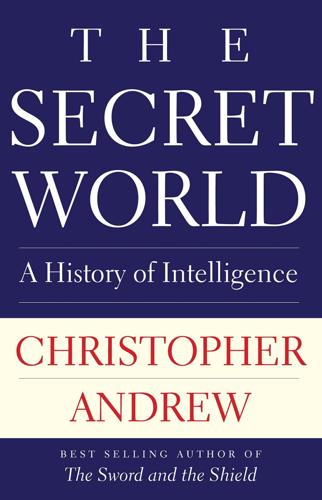
The Secret World: A History of Intelligence
by
Christopher Andrew
Published 27 Jun 2018
In 1513 he prepared a world map which included the New World and drew, he claimed, on European maps, including one by Columbus which has not survived. In 1553, then an admiral, probably in his mid-eighties, Piri was executed. (McIntosh, Piri Reis Map of 1513.) † In 2006 a copy surfaced of a Chinese map of (allegedly) 1418 showing that the great Chinese admiral Zheng He sailed around the world a century before Columbus. It shows the continents of North and South America with detail which includes Alaska, the Yucatan peninsula, and the Mississippi and St Lawrence rivers, and is plainly a hoax. (https://www.theguardian.com/world/2006/jan/20/china.usa.) ‡ Venice’s loss of its status as Europe’s greatest trading empire, however, did not diminish its determination to protect its own commercial secrets.